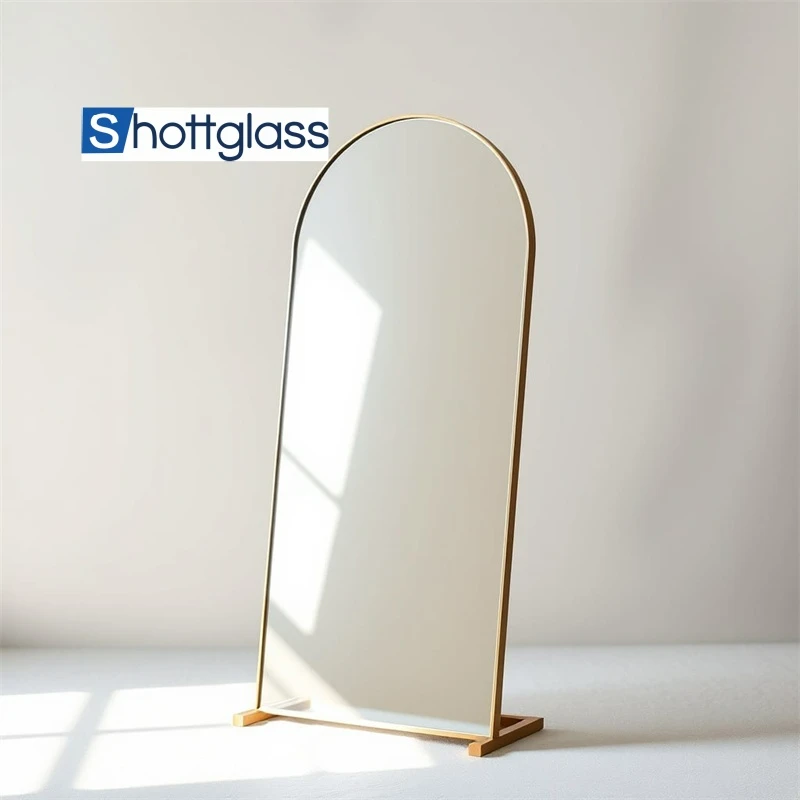Nov . 21, 2024 09:49 Back to list
Acid Etched Glass vs. Sandblasted Glass: Key Differences and Benefits
In modern architectural and interior design, the demand for privacy, aesthetics, and light diffusion has driven the popularity of textured glass. Two widely used methods to achieve these qualities are acid etched glass and sandblasted glass. Though both processes result in frosted or textured finishes, their applications and benefits vary. This article explores the key differences between acid etched glass and sandblasted glass and helps determine which is the better choice for your design needs.
The Aesthetic Appeal of Acid Etched Glass Panels
Acid etched glass panels offer a smooth, consistent surface that gives a soft, frosted appearance. The acid etching process involves applying a mild acid solution to the glass, which removes a thin layer, leaving behind a uniform matte finish. One of the main advantages of acid etched glass is its versatility in creating various designs and patterns. From intricate acid etched glass patterns to simple frosted finishes, this type of glass can be customized to fit any design concept.
In addition to its aesthetic flexibility, acid etched glass panels are easy to maintain, as the smooth surface is resistant to fingerprints and smudges. This makes them ideal for high-traffic areas like office partitions, shower enclosures, and doors, where the combination of beauty and practicality is essential.
The Durability and Privacy of Sandblasted Toughened Glass
On the other hand, sandblasted toughened glass provides a more textured finish and greater durability. The sandblasting process involves bombarding the glass surface with fine grains of sand or other abrasive materials, which roughens the glass and creates a more tactile frosted appearance. This method makes sandblasted glass highly durable, especially when combined with toughening techniques, making it an excellent choice for areas that require strength and safety, such as external doors and windows.
In terms of privacy, sandblasted privacy glass offers a high level of opacity while still allowing light to filter through, making it a popular option for bathroom windows, office partitions, and public spaces where both privacy and natural light are needed.
Frosted Laminated Glass for Extra Strength and Security
For projects requiring an extra layer of safety, frosted laminated glass is an excellent option. This type of glass combines the frosted appearance achieved through either acid etching or sandblasting with the added security of lamination. The lamination process involves bonding multiple layers of glass together with a plastic interlayer, which holds the glass in place even if it breaks. This makes frosted laminated glass ideal for applications where safety is paramount, such as skylights, storefronts, and glass railings.
Both acid etched glass and sandblasted glass can be laminated, offering the same visual appeal but with enhanced security features. This combination of strength and style makes frosted laminated glass a versatile choice for modern design.
Acid Etched Glass Patterns: Customization for Modern Interiors
One of the major benefits of acid etched glass is the ability to create customized patterns and designs. Unlike sandblasting, which can be more limited in terms of detail, acid etched glass patterns can range from delicate, intricate motifs to bold geometric designs. This makes acid etched glass particularly suited for interior design projects where aesthetic appeal is a priority.
Whether you’re designing a contemporary office space or a chic residential interior, the flexibility of acid etched glass allows for unique, personalized touches that elevate the overall look of the space. Patterns can be applied to entire panels or just portions of the glass, giving designers the freedom to play with light and shadow in creative ways.
Key Differences Between Acid Etched Glass and Sandblasted Privacy Glass
While both acid etched glass and sandblasted privacy glass offer similar visual effects, the key difference lies in the texture and level of opacity. Acid etched glass is smoother to the touch and tends to have a more refined, consistent finish. It is also better at resisting dirt and fingerprints, which makes it easier to clean and maintain.
In contrast, sandblasted privacy glass has a more textured surface, which can create a rougher look and feel. It may require more maintenance as the tiny abrasions in the glass can trap dust and dirt over time. However, sandblasted glass provides a higher level of privacy, especially in thicker or tougher applications, as the surface is more opaque compared to acid etched glass.
When choosing between acid etched glass and sandblasted glass, the decision largely depends on the specific needs of the project. For a sleek, modern aesthetic with customizable patterns, acid etched glass panels are ideal. They offer flexibility in design and are easy to maintain, making them perfect for interior applications. On the other hand, sandblasted toughened glass provides enhanced durability and higher opacity, making it a better option for exterior applications or areas that require added security and privacy.
-
Chemically Strengthened Glass vs Tempered Glass
NewsJul.18,2025
-
Custom Frosted Glass Applications
NewsJul.18,2025
-
What’s the Difference Between Obscure Glass and Frosted Glass?
NewsJul.18,2025
-
Bullet Resistant Glass Levels
NewsJul.18,2025
-
Silver Wall Mirrors for Living Room
NewsJul.18,2025
-
Bullet Resistant Glass Definition
NewsJul.18,2025
Related PRODUCTS














